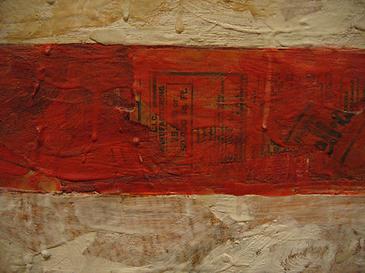Jasper Johns is an American artist whose work has left an indelible mark on the art world. Known for his innovative approach to painting and sculpture, Johns has been a major influence on contemporary artists and has paved the way for new artistic movements. Throughout his career, Johns has been fascinated with the ordinary, transforming everyday objects into extraordinary works of art. In this article, we will take a deep dive into his revolutionary works and discover the artistic genius of Jasper Johns.
The Early Life and Artistic Beginnings of Jasper Johns

Jasper Johns was born in Augusta, Georgia, in 1930, and he grew up in South Carolina. After attending the University of South Carolina for a brief period, Johns moved to New York City in 1949 to study at the Parsons School of Design. He was drafted into the Korean War in 1951, where he served for two years before returning to New York City to continue his artistic pursuits.
Johns’ early work was heavily influenced by the Abstract Expressionist movement, which was dominating the art scene in New York at the time. He became friends with fellow artist Robert Rauschenberg, who introduced him to the avant-garde scene and other influential figures such as composer John Cage and choreographer Merce Cunningham. These relationships would prove to be pivotal in shaping Johns’ artistic vision and career.
The Influence of Abstract Expressionism on Jasper Johns
Abstract Expressionism was a movement characterized by the use of abstract forms, gestural brushstrokes, and emotional intensity. Key artists associated with this movement include Jackson Pollock, Willem de Kooning, and Mark Rothko. While Johns was inspired by the raw energy and freedom of expression in Abstract Expressionism, he felt the need to take a different approach to his own work.
Johns began to move away from the gestural brushstrokes and emotional intensity of Abstract Expressionism, instead focusing on the exploration of everyday objects and symbols. His work became more concerned with the idea of representation and the process of painting itself. This shift in focus led to the development of his own unique style, which would ultimately revolutionize the art world.
Jasper Johns’ Revolutionary Approach to the American Flag
One of the most iconic and enduring symbols in Johns’ work is the American flag. His flag paintings, which he began in the early 1950s, are considered some of the most important and influential works of 20th-century art. At the time, Johns’ approach to the flag was a radical departure from the emotionally charged, abstract work of his contemporaries.
Johns’ interest in the American flag stemmed from a dream he had where he saw himself painting a large flag. This dream inspired him to explore the subject matter further, focusing on the visual aspects of the flag and its symbolic significance as a national emblem.
The Significance of Jasper Johns’ Flag Paintings
Johns’ flag paintings are more than just a representation of an iconic symbol; they challenge the viewer to think about the nature of art and representation itself. By painting the flag in such a straightforward manner, Johns forces the viewer to confront the object as both a symbol and a work of art. This duality is a recurring theme in Johns’ work and is characteristic of his unique approach to art-making.
The flag paintings also marked a turning point in Johns’ career, as they were met with critical acclaim and helped to establish his reputation as a leading contemporary artist. Additionally, these works are often seen as a precursor to the Pop Art movement, which would emerge in the 1960s and also explore the themes of consumerism, mass media, and everyday objects.
Exploring Other Iconic Works by Jasper Johns
In addition to his flag paintings, Jasper Johns has created numerous other iconic works throughout his career. One such work is his series of “Target” paintings, which feature a target symbol as the central image. Like the flag paintings, the target works challenge the viewer to consider the relationship between the object and its representation, as well as the role of the artist in creating meaning.
Another significant series in Johns’ oeuvre is his “Numbers” series, which consists of paintings and sculptures that incorporate the numerals 0 through 9. In these works, Johns explores the idea of repetition and the process of art-making, as well as the symbolic nature of numbers.
Johns has also worked extensively with printmaking, creating lithographs, etchings, and screenprints that often feature variations on his signature motifs, such as flags, targets, and numbers. These prints demonstrate Johns’ technical skill as a printmaker and his ongoing interest in exploring different mediums.
The Legacy of Jasper Johns in Modern Art
Jasper Johns’ innovative approach to art and his exploration of everyday objects and symbols have had a profound impact on the art world. His work has been instrumental in shaping the course of modern art, paving the way for movements such as Pop Art and Minimalism. Moreover, Johns’ emphasis on the process of art-making and the relationship between the artist and the viewer has had a lasting influence on contemporary artists.
Jasper Johns’ Influence on Contemporary Artists
Many contemporary artists have been inspired by Jasper Johns and his groundbreaking work. Artists such as Roy Lichtenstein, Andy Warhol, and Robert Indiana have all cited Johns as a major influence on their own artistic practices. Additionally, Johns’ exploration of everyday objects and symbols has had a lasting impact on the art world, inspiring artists to continually push the boundaries of what constitutes art.
Notable Exhibitions and Collections Featuring Jasper Johns’ Work
Jasper Johns’ work has been featured in numerous exhibitions and collections around the world. Some notable exhibitions include his first solo show at the Leo Castelli Gallery in 1958, which featured his famous flag paintings; the 1964 Venice Biennale, where he was awarded the International Grand Prize for Painting; and a major retrospective at the Museum of Modern Art in New York in 1996.
Johns’ work can also be found in the permanent collections of prestigious institutions such as the Museum of Modern Art in New York, the Tate Modern in London, and the Centre Pompidou in Paris.
Throughout his career, Jasper Johns has continually pushed the boundaries of what art can be and has challenged our understanding of representation and symbolism. His innovative approach to the American flag, as well as his exploration of everyday objects and symbols, has left an indelible mark on the art world and continues to inspire contemporary artists today. The enduring impact of Jasper Johns’ artistic genius serves as a testament to his status as one of the most important and influential artists of the 20th century.
